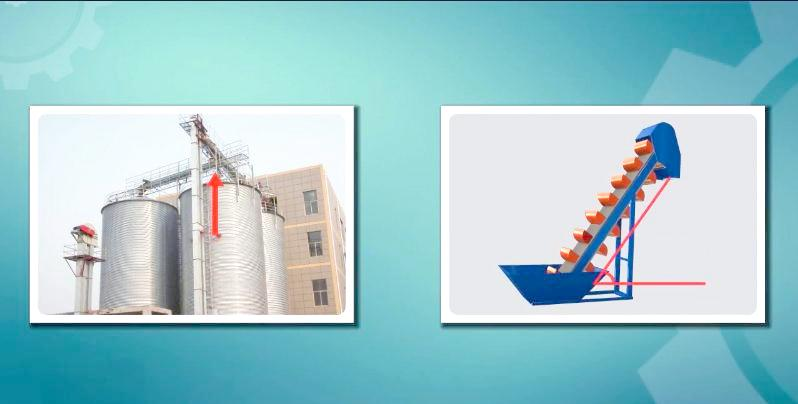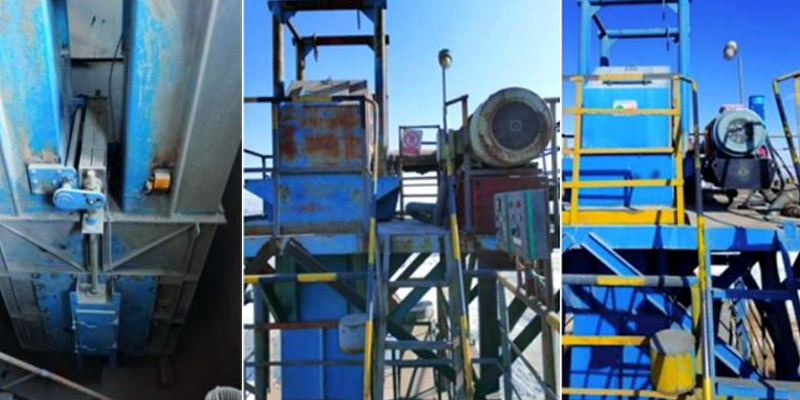What is a Rotary Valve?
A rotary valve, also known as a rotary airlock feeder or star feeder, is a key component in pneumatic conveying systems. It controls the flow of dry bulk materials like powder and granules. This valve provides a constant feed rate. It also maintains an airlock to prevent pressure loss. Proper maintenance prevents industrial plant downtime and ensures operational efficiency.
How a Rotary Valve Works: The Operating Principle
The core component of a rotary valve is a rotor with multiple blades. This rotor turns at a constant speed inside a sealed housing.
-
Step 1: Feeding Process
First, the rotor blades pass under the upper inlet. Material from the hopper falls into the pockets between the blades. -
Step 2: Sealing and Conveying Process
Then, the rotor continues to turn. The filled pockets become sealed “mini-buckets” inside the housing. This action transports the material. -
Step 3: Discharge and Air-Locking Process
Finally, the pockets rotate to the bottom outlet. Material discharges by gravity. Most importantly, the rotor blades always separate the inlet and outlet. This design effectively prevents air from flowing directly from the high-pressure zone (typically below) to the low-pressure zone (typically above). This is the essential airlock function.
An electric motor and a gear reducer typically drive the system. Often, a nitrogen purge or other sealing system is added to handle powdery conditions.

Common Faults and Solutions
1. High Current or Motor Overload
High current signals an overload in the valve. This often leads to motor trip and system shutdown.
-
Fault: Bearing Failure.
-
First, material leaks into the bearing housing through a damaged shaft seal. This causes bearing failure and increases friction. Replace the seal and bearing.
-
Alternatively, the bearing itself can wear out. This allows the rotor to move and rub against the housing. Replace the bearing.
-
-
Fault: High Inlet Feed Rate.
-
Sometimes, a level indicator fails. Or, the upstream process has a surge. Consequently, too much material floods the valve. This jams the rotor. Regularly check level sensors and control valves to prevent this.
-
-
Fault: Downstream Blockage.
-
For example, a discharge valve might not open. Or, a pneumatic conveyor fan might stop. Therefore, material cannot exit. The valve chamber fills up and jams. Always check the control system logic and downstream equipment.
-
-
Fault: Seal System Failure.
-
Packing seals can wear out over time, especially with high-temperature materials. Replace them periodically.
-
The seal spring can also lose tension. Then, the seal cannot function. Replace the spring.
-
Furthermore, seal air or nitrogen pressure might be too low. This allows powder into the seal area. Always maintain purge pressure about 0.1-0.2 MPa above the valve’s internal pressure.
-
-
Fault: Rotor Contact and Friction.
-
Often, the rotor touches the housing because the clearance is wrong. Use a feeler gauge to check and adjust the gap during maintenance.
-
Also, foreign objects or hardened material can get stuck between the rotor and housing. Clean the valve interior thoroughly.
-
Misalignment between the gearbox and valve can cause friction too. Always check sprocket alignment.
-
-
Fault: Drive System Issues.
-
Finally, check the motor, gearbox, and VFD (Variable Frequency Drive). These components can cause high current if they fail. Perform regular electrical and mechanical inspections.
-
2. Clutch Slippage or Failure
Some rotary valves use a clutch as a drive and safety device.
-
The clutch slips due to wear, overload, or oil contamination.
-
Solution: First, replace the clutch with a reliable OEM or aftermarket part.
-
Better Solution: Redesign the System. You can remove the clutch. Install a keyed connection between the shaft and drive. This creates a more robust and reliable power transmission.
-
Advanced Upgrade: Furthermore, you can relocate the bearings outside the valve body. Also, use a long through-shaft and upgrade to a gear reducer. Then, add advanced shaft sealing with a labyrinth seal, packing, and air purge. This comprehensive upgrade solves many common problems.
3. Valve Jamming or Seizing
The valve is completely stuck and will not turn.
-
Fault: Severe Bearing Damage.
-
Previously, failed seals allowed powder into the bearings. This caused a lack of lubrication. Eventually, the bearing seized. You must replace the bearings and all related seals.
-
-
Fault: Over-tightened Bolts or Obstruction.
-
Sometimes, end cover bolts are too tight after maintenance. This puts pressure on the rotor. Loosen the bolts to the correct torque.
-
Otherwise, a large solid object may be stuck inside. You need to open and clean the valve.
-
Conclusion and Maintenance Tips
In summary, rotary valves are simple but critical. Therefore, proactive maintenance is essential for material handling efficiency.
Key Takeaways:
-
Always monitor motor current; it is a key indicator of valve health.
-
Then, establish a preventive maintenance schedule for seals and bearings.
-
Finally, consider design upgrades for chronic problems to reduce maintenance costs and improve performance.
By following this guide, you can effectively troubleshoot your rotary feeder, minimize unplanned downtime, and keep your pneumatic conveying system running smoothly.




